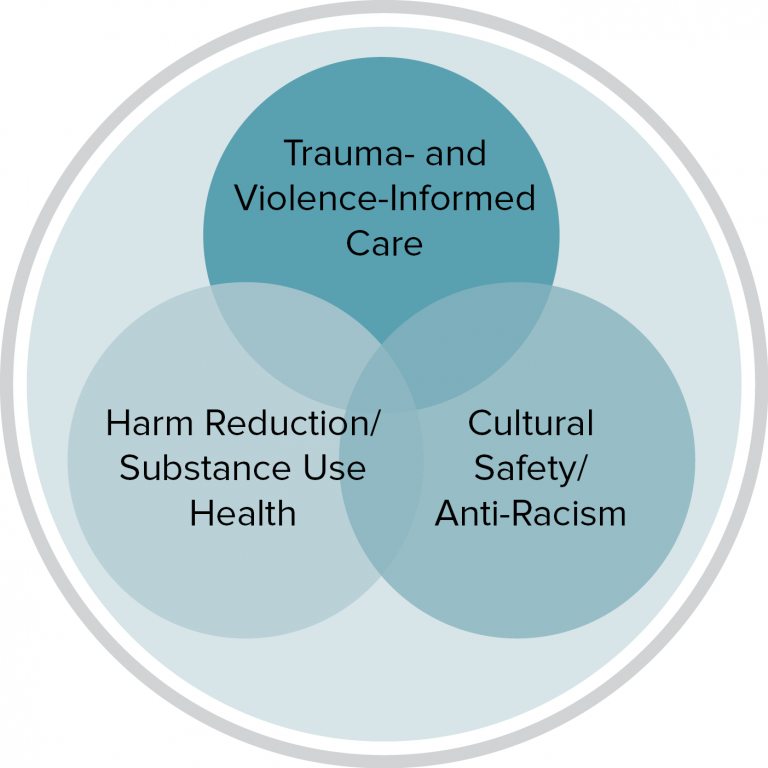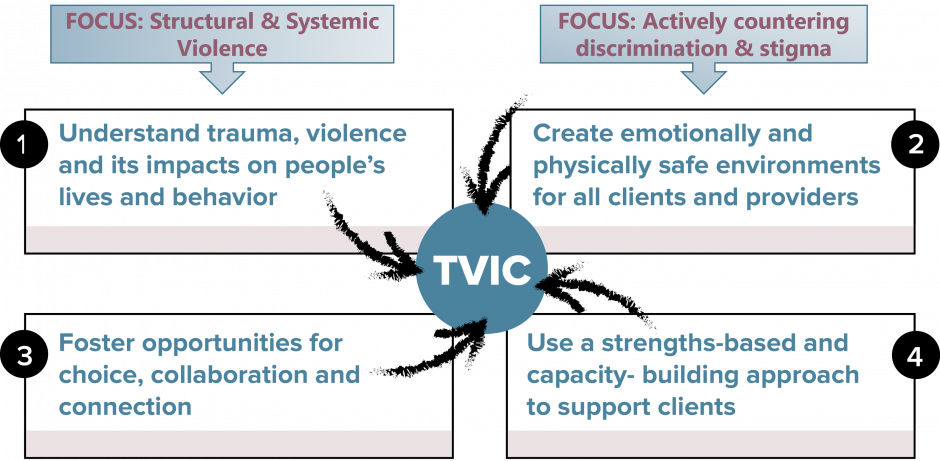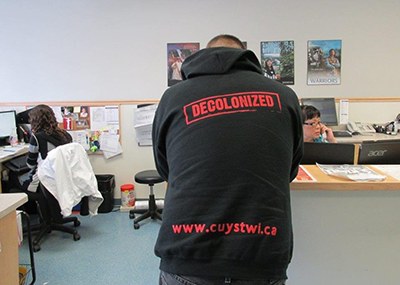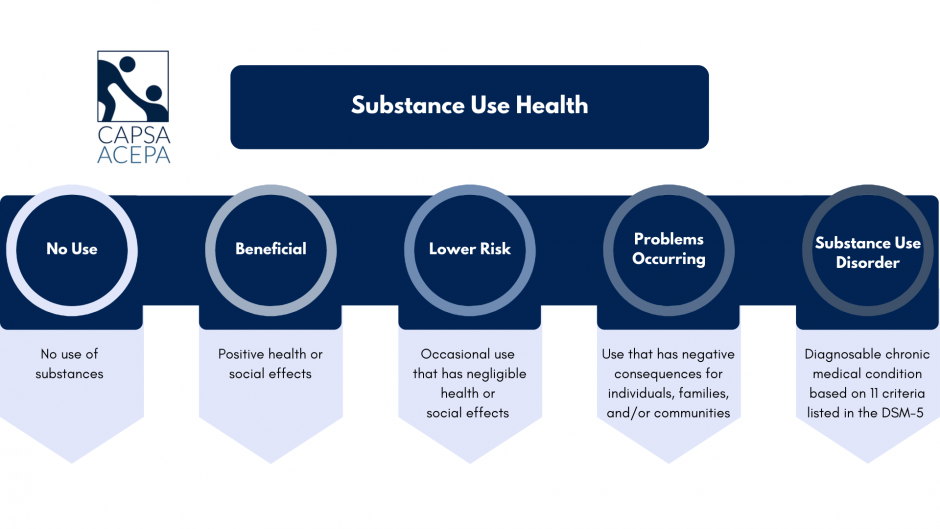Orienting to Equity
The Action Kit structures its tools and resources in a staged, flexible and tailorable approach to implementation organized into 7 steps aligned with three phases of the Active Implementation Frameworks.

The Action Kit is based on three key dimensions of equity-oriented care (EOC).
The Key Dimensions of Equity-Oriented Care (EOC):
Each brief definition below links to additional related resources, including our EQUIP Equity Essentials to provide the “basics” and ways to learn more. These Essentials each include a short list (~5-10 points!) of essential ideas and teachings related to each concept and a brief (~5 minutes) video of people with lived experience of inequities and of promoting equity talking about the ideas. The Essentials can serve to quickly orient all people using the Action Kit to the key concepts. They can also be used as an educational resource or onboarding tool for staff towards a shared understanding of these concepts.

Key Dimension: Trauma- and Violence-Informed Care (TVIC)
TVIC has four tailorable principles to promote safety, respect, autonomy and choice and is based on:
- Recognizing the effects of trauma, and especially interpersonal (e.g., partner violence, child maltreatment, elder abuse) and structural (e.g., poverty, racism, transphobia) forms of violence as intersecting, with compounding impacts on health and well-being
- Understanding that people disadvantaged by inequities, including those resulting from systemic and interpersonal racism and other forms of discrimination, often experience multiple forms of violence that have ongoing traumatic impacts
- Shifting the emphasis from disclosures of traumatic experiences to creating a safe environment for discussions of safety, including for those most traumatized, whether that history is known or not
TVIC means that the responsibility for the physical, cultural and emotional safety of the person accessing care or services rests with the organizations and professionals providing care. This can be thought of as a universal approach to ensuring that individuals do not suffer further harm when seeking care and are helped in ways that are based on their strengths and capacities and offer meaningful choice and collaboration, especially in the face of barriers to service access. Attention to structural violence1 is important because most of the determinants of violence and inequity are beyond a person’s control and EOC requires structural analysis and changes. The extent to which TVIC is achieved can only be determined by the recipients of service.
1Structural violence refers to the systemic disadvantages that stem from the perpetuation of unjust structures, policies, and institutional practices, which shape everyday social patterns and contribute to poor health. Structural violence is recognized as a major determinant of the distribution and outcomes of social and health inequities.
TVIC Principles
To access the Essentials page and video on TVIC, click this link or on the image above.
Key Dimension: Cultural Safety & Anti-Racism
Cultural Safety & Anti-Racism require concerted efforts to reduce power imbalances, racism, and discrimination enacted in covert and often overt ways in virtually all settings (e.g., in healthcare, the justice system, social services, mental health services, substance use treatment settings, etc). Understanding the principles of cultural safety will help direct care providers and organizational leaders to design services and to deliver care with an anti-racist and anti-discriminatory stance.
In tandem with TVIC principles, cultural safety is about mitigating the potential traumas and lack of safety that people may experience as they seek help, increasing the likelihood that they will be treated with unconditional positive regard, irrespective of their ethnocultural background, community location, heritage, ancestry, primary language(s) spoken, accent or appearance; and that staff and organizations will actively counteract the types of biases, stereotypes, and assumptions that are pervasive in Canadian society, including in health and social services.
Addressing racism is foundational to creating culturally safe services, and requires particular attention to racism directed toward Indigenous peoples, which has been enacted systemically in Canada for centuries, and continues to have profound, harmful effects today. Anti-racism, like cultural safety, is both an ongoing action-oriented process, and an outcome based on action; all levels of the organization need to ensure that people who identify as Indigenous, Black, and Peoples of Color (IBPOC), including staff, feel respected, safe and welcome.
Example:
Indigenous people are often subject to multiple intersecting forms of racism, discrimination and stigma, including gender-based discrimination, and stigma related to substance use regardless of whether or not they use substances. Anti-racism, anti-stigma, and gender-based equity strategies are therefore intertwined and essential to close the health equity gap. Cultural safety and anti-racism require the direction and engagement of Indigenous people and others who have experienced racism.
To access the Essentials page and video on Cultural Safety & Anti-Racism, click this link or on the image above.
Key Dimension: Harm Reduction/Substance Use Health
Substance use health frames substance use in relation to a continuum that encompasses beneficial uses, recreational uses, and harmful uses and consequences, and encompasses harm reduction to promote health in relation to using substances.
Working with people to support their priorities with regard to substance use health means a) deprioritizing abstinence as the primary service success outcome, b) removing barriers to care, including intersecting forms of stigma, and c) facilitating access to social determinants of health for those with inadequate access.
Reducing substance use stigma is part of harm reduction. Stigma is a major driver of the harms associated with substance use and prevents people from seeking care. Substance use stigma refers to a set of negative beliefs about people related to their assumed or actual substance use.
Providing care that aligns with peoples’ varied aspirations related to substance use health requires that people with experiences of substance use stigma take the lead in designing services, and determining their own care goals. This may encompass harm reduction as a philosophy and a set of strategies focused on preventing the harms of substance use. From this perspective, harm reduction is an evidence-based approach that frames substance use as a health issue.
“Substance Use Health” spectrum model developed by Community Addictions Peer Support Association (2022).
To access the Essentials page and video on substance use health, click this link or on the image above.
We have shown that these key dimensions, originally developed for health care, are equally relevant to social service and educational sectors. The resources contained in this Action Kit are grounded in evidence generated from prior intervention research in primary health care and emergency departments, with related work in social service sectors including policing, settlement services, education, and public health (for the evidence base see our publications). Based on this evidence and ongoing knowledge mobilization with policy and practice partners, the Action Kit is purpose-built, tailorable, and designed for immediate uptake and scale-up by providers, units, organizations, and sectors. The cutting-edge Action Kit strategies are explicitly designed to produce a noticeable acceleration in improvements in: a) how services are designed and provided, b) the well-being and morale of direct service providers, c) outcomes for socially disadvantaged people, and d) the methods and metrics for studying and monitoring the impact of equity-oriented approaches in diverse contexts.
Make sure to watch the Essentials videos on Equity-Oriented Health Care, Trauma- and Violence-Informed Care, Anti-Racism and Cultural Safety, Chronic Pain, Substance Use Health and Substance Use Stigma before moving forward. Throughout the Action Kit we offer key strategies to enact the key dimensions toward equity.











